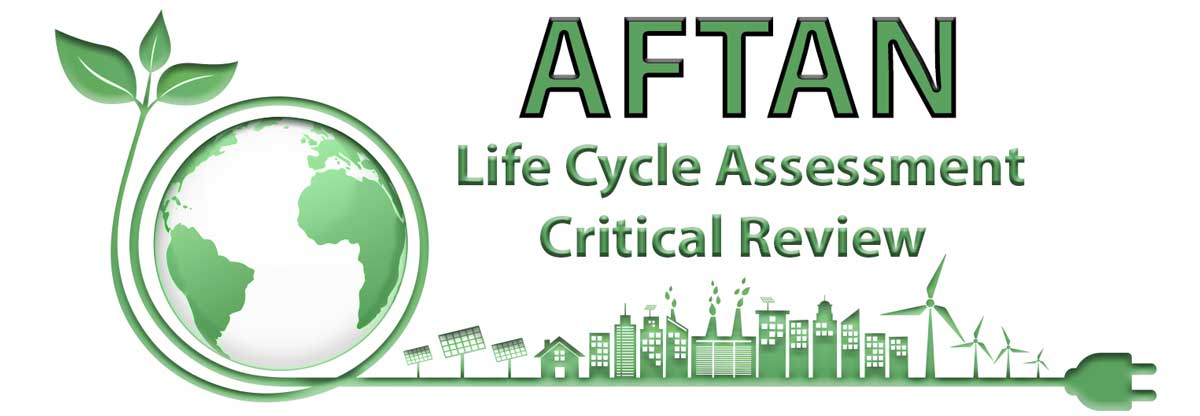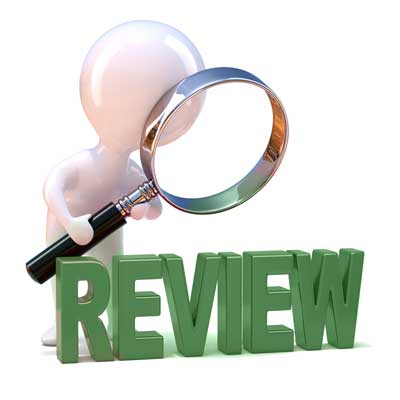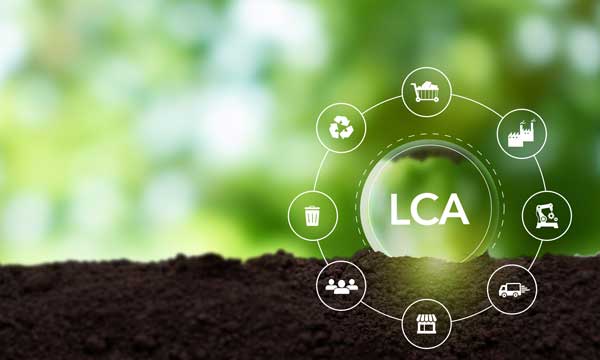Expert Life Cycle Assessment (LCA) Peer Review Services
Empowering Sustainable Solutions for a Greener Future
839 Alleghenyville Road Mohnton, PA 19540-7708
Tel. 610-914-1356 email: lpeterson@aftan.com

Review / Verification Services
Why Choose Aftan Life Cycle Assessment (LCA) Review Services?
Ensure your LCA report meets the highest standards of accuracy and transparency with our trusted third-party review and verification services.
- Experienced Professionals: Our consultants are well-versed in LCA frameworks, sustainability metrics, and international verification practices. We also have experience in running large companies. Therefore, we never lose sight of the imporrtance of maintaining profitable operations while satisfying your sustainability goals.
- Custom Solutions: We tailor our LCA reviews to your unique industry needs and organizational goals. Our industry expertise includes:
- Electronics;
- Optics;
- Energy and Water Systems Infrastructure;
- Polymers;
- Chemicals;
- Metals;
- Automotive;
- Agricultural;
- Medical;
- Food;
- Pharmaceutical;
- Packaging;
- Manufacturing;
- and More
- Global Insights: Because we have expertise in diverse industries and global standards, we can offer valuable perspectives across regions and sectors.
Lisa Peterson's Unique LCA Review Qualifications
- Lisa Peterson, Ph.D., PE, MBA, is the President of Pennsylvania-based Aftan Engineering.
- Professional Sustainability, Life Cycle Assessment (LCA), and ISO 14001 Consultant.
- Ph.D. in Environmental Engineering.
- Lean Six Sigma Black Belt Certification.
- Thirty years of engineering experience, and has held high-level management positions.
- Has successfully participated in several LCA Critical Review Panels.
- Specializes in Leading Edge Technology and Smart Products.
Why a LCA Review and Verification is Crucial
The LCA report serves as a valuable tool for understanding the environmental impacts of the product analyzed. While the report demonstrates methodological strengths and produces insightful recommendations, addressing its weaknesses will enhance its effectiveness. Ensuring robust and comprehensive analyses will contribute to more sustainable practices and informed decision-making in product development.
If you intend to publish the results of your LCA study, an independent external critical review is necessary.
If you are making a comparative assertion, a three-person panel will be necessary for the critical review.
How Are LCA Third-Party Reviewers or Panel Members Selected?
The goal is to assemble a group of reviewers who can provide a thorough and unbiased evaluation of the LCA Report.
The organization or entity overseeing the assessment generally determines the composition of a panel for a critical review of a Life Cycle Assessment (LCA) report.
Considerations for Selecting LCA Reviewers or Panel Members
- Organizational Authority: The organization that commissioned the LCA or the entity maintaining the assessment standards typically selects the panel members.
- Expertise: Panel members are typically chosen based on their knowledge in relevant fields, such as environmental science, sustainability, industrial processes, or specific areas related to the product or service assessed.
- Diversity of Perspectives: Ensuring a diverse range of perspectives can be significant. Therefore, the selection committee might choose panelists from different sectors, including academia, industry, and government.
- Accreditation Bodies: In some cases, third-party accreditation or certification bodies may be involved in the selection process to ensure impartiality and adherence to standards.
- Stakeholders: In more collaborative or participatory approaches, stakeholders affected by the assessment (e.g., community representatives, consumers, or industry stakeholders) may have a say in the selection process.
What Does an LCA Critical Reiview / Verification Involve?

Methodological Rigor Strengths
- The report defines a clear system boundary, ensuring that the assessment includes all relevant phases.
- Appropriate life cycle impact assessment (LCIA) methods are used, such as ReCiPe or TRACI.
- Weaknesses:
- The preparer may leave some assumptions unjustified; for example, they do not thoroughly specify the transportation distance for raw materials.
- The report lacks sensitivity analysis, which is crucial to understanding the impact of uncertain variables.
Data Quality
- Strengths: Data sources are credible, including peer-reviewed studies and industry reports.
- Weaknesses: Some data appear outdated or lack regional specificity, which could affect the relevance of the results.
Impact Assessment
- Strengths: The assessment covers multiple environmental impact categories, including greenhouse gas emissions and resource depletion. Clear presentation of results through charts and tables enhances understanding.
- Weaknesses: A limited discussion on how impact categories interrelate may overlook potential trade-offs (e.g., CO2 reduction vs. biodiversity loss).
Interpretation of Results
- Strengths: Recommendations for reducing environmental impact are practical and based on sound analysis.
- Weaknesses: The report could benefit from a more in-depth discussion on stakeholder implications, including those of consumers and policymakers.
Recommendations for Improvement
- Transparency: Improve clarity regarding assumptions and data sources to enhance credibility.
- Sensitivity Analysis: Incorporate sensitivity analyses to address uncertainties and demonstrate the robustness of findings.
- Regional Data: Utilize more localized data to improve the relevance of the analysis for specific markets.
- Depth of Discussion: Expand on the implications of results to engage a broader audience and support decision-making.
What Is a Life Cycle Analysis (LCA) Report?
Life Cycle Assessment (LCA) is an essential methodology for evaluating the environmental impacts associated with all stages of a product's life cycle.
- Objective: The report aims to quantify the environmental impacts of a specific product throughout its life cycle.
- Scope: The analysis of an LCA covers all essential phases of a product's life cycle, including:
- Raw Material Extraction: This phase assesses the environmental impacts associated with obtaining the raw materials necessary for the product. It considers the effects of resource depletion, habitat disruption, and pollution resulting from extraction activities.
- Manufacturing: Here, the focus is on the production processes involved in converting raw materials into finished products. This phase assesses energy consumption, emissions, and waste generation, as well as their impacts on air, water, and soil.
- Transportation: This part of the analysis assesses the environmental impact associated with transporting raw materials to manufacturing facilities and delivering finished products to consumers. It considers emissions generated during transportation and the associated carbon footprint.
- Usage: This phase examines the environmental impacts that occur during the product's operational life. It includes evaluating energy usage, potential waste generation, and user behavior, emphasizing how different usage patterns can influence environmental outcomes.
- Disposal: Finally, the disposal phase addresses the end-of-life options for the product, examining the environmental impacts of various disposal methods, including recycling, landfilling, and incineration. This phase aims to assess the long-term ecological implications of these disposal methods.
- Methodology: The report follows recognized LCA standards, including ISO 14040 (2006) and ISO 14044 (2006).

"LCA provides a comprehensive view of the environmental impact from cradle to grave, ensuring we address the full implications of our actions."
What Are the Main LCA Standards and How Are They Applied?
What Is ISO 14040?
- Provides a systematic approach to measuring these impacts, ensuring consistency and comparability in results.
- Provides the framework for LCA, outlining the principles and framework of Life Cycle Assessment, including its four phases:
- Goal and Scope Definition: This initial phase involves clearly defining the purpose of the assessment, which guides the overall study. Here, organizations establish the boundaries of the analysis, determining which life cycle stages the evaluation will include and how they relate to the product's functional unit. The functional unit serves as a reference point allowing for fair comparisons between different products or processes. Additionally, this phase outlines the assumptions, limitations, and intended audience for the LCA, ensuring that stakeholders understand the context and objectives of the assessment.
- Life Cycle Inventory Analysis: The LCIA phase evaluates the potential environmental effects derived from the inventory data collected in the previous phase. The LCIA phase involves translating inventory information into impact categories, such as global warming potential, ozone depletion, and resource depletion. ISO 14040 emphasizes the importance of selecting appropriate impact assessment methods and indicators to provide an accurate evaluation of the potential effects of the product throughout its life cycle.
- Life Cycle Impact Assessment:The LCIA phase evaluates the potential environmental impacts derived from the inventory data collected in the previous phase. This involves translating inventory information into impact categories, such as global warming potential, ozone depletion, and resource depletion. ISO 14040 emphasizes the importance of selecting appropriate impact assessment methods and indicators to provide an accurate evaluation of the potential effects of the product throughout its life cycle.
- Interpretation: The final phase focuses on analyzing the results obtained from the impact assessment and forming conclusions based on this analysis. During the interpretation phase, practitioners evaluate the findings, identify significant impacts, and consider any uncertainties associated with the data and methods used. This analysis culminates in recommendations for informed decision-making, which can guide product design, process improvements, or strategies for mitigating environmental impacts. Effective communication of the results to stakeholders is critical, as it ensures that the insights derived from the LCA can be understood and acted upon.
What Is ISO 14044?
- Provides further requirements and guidelines for conducting LCA studies. ISO 14044 details how to perform the various phases established in ISO 14040 and emphasizes aspects such as:
- Quality Assurance: One of the key aspects highlighted in ISO 14044 is the importance of quality assurance throughout the LCA process. Quality Assurance involves the use of reliable, consistent, and relevant data to ensure that the results accurately reflect the environmental impacts of the product under analysis. Establishing clear criteria for data collection, processing, and documentation promotes transparency and integrity in the assessment, enabling stakeholders to trust the findings.
- Critical Review: ISO 14044 encourages the incorporation of a critical review process for LCA studies, particularly results intended for public disclosure or used in marketing claims. A critical review involves having external experts evaluate the methodology, data, and interpretations presented in the LCA. This peer review process enhances the credibility of the results and can provide an objective perspective that helps identify potential biases, inconsistencies, or areas for improvement.
- Interpretation: The interpretation phase is crucial in LCA, and ISO 14044 offers guidance on how analysts should approach this step. It emphasizes the need for a comprehensive analysis of the results, considering the study's context and the objectives set during the goal and scope definition phase. Analysts are encouraged to identify significant findings, assess uncertainties, and communicate results effectively to support informed decision-making. This phase is vital for translating data into actionable insights that can drive improvements in sustainability practices.
Benefits of ISO 14040 and ISO 14044
By integrating the guidelines from both ISO 14040 and ISO 14044, organizations can conduct thorough and scientifically valid Life Cycle Assessments. Incorporating ISO 14040 into the LCA process enhances the credibility of the assessment and aligns it with international standards, making it a trustworthy resource for stakeholders interested in sustainability efforts. This comprehensive approach not only helps in understanding the environmental impacts of products but also aids in identifying areas for improvement, ultimately contributing to more sustainable practices. By following the principles outlined in these ISO standards, organizations can make informed decisions that reduce their overall environmental impact while promoting sustainable development.
Frequently Asked Questions About Life Cycle Assessments
What Is a Life Cycle Assessment?
A Life Cycle Assessment (LCA) is a comprehensive method for evaluating the environmental impacts associated with all stages of a product, process, or service's life cycle. It takes a holistic approach, considering the entire life cycle, which typically includes:
- Raw Material Extraction: Assessing the environmental effects of obtaining and extracting raw materials.
- Manufacturing and Processing: Evaluating the impacts of creating the product or delivering the service, including energy use, emissions, and waste generation.
- Distribution and Transportation: Analyzing the environmental footprint of moving the goods or delivering the service to their destinations.
- Usage: Understanding the environmental impacts of the product or service during its use phase, such as energy consumption or emissions.
- End-of-Life: Evaluating what happens to the product after use, including recycling, disposal, or reuse.
What are the Main Stages of an LCA?
There are usually four to six Main Stages. The product or service assessed determines the number of stages. Those stages include: Those stages include:
- Raw Material Extraction: Assessing the environmental effects of obtaining raw materials.
- Manufacturing and Processing: Evaluating the impacts of creating the product or service.
- Distribution and Transportation: Analyzing the environmental footprint of moving goods to their destinations.
- Usage: Understanding the environmental impacts of the product during its use phase.
- End-of-Life: Evaluating what happens to the product after use (e.g., recycling, disposal, or reuse).
How does an LCA help in environmental decision-making?
Overall, LCA provides critical insights that decision-makers can use to choose sustainable options, minimize ecological damage, and promote long-term environmental stewardship. It is an indispensable tool for businesses, governments, and organizations aiming to prioritize sustainability in their operations and policies.This approach helps in environmental decision-making in several ways:
- Comprehensive Impact Analysis: LCA considers all stages of a product's life cycle—from raw material extraction and manufacturing through distribution, use, and disposal. This comprehensive approach ensures that environmental impacts are not overlooked or shifted from one stage to another. Decision-makers can identify which phase or activity contributes the most to environmental harm and address those areas effectively.
- Data-Driven Decision-Making: By quantifying environmental impacts such as carbon emissions, resource depletion, water consumption, and toxicity, LCA provides objective data. An LCA enables stakeholders to compare various options and make informed, environmentally friendly choices, rather than relying solely on intuition or incomplete information.
- Improves Product and Process Design: LCA can guide organizations in designing or redesigning products and processes to reduce their environmental footprint. For instance, using less harmful materials, minimizing waste, or increasing energy efficiency may emerge as actionable insights from an LCA.
- Supports Policy Development: Governments and regulatory bodies can use LCA results to develop policies that encourage sustainable practices. For example, LCA can justify stricter regulations on specific manufacturing processes or inform incentives for greener technologies.
- Promotes Circular Economy: By identifying opportunities to reuse, recycle, or repurpose materials, LCA supports the transition to a circular economy, reducing reliance on finite resources and minimizing waste.
- Enables Comparisons of Alternatives: LCA helps assess the environmental trade-offs between alternative products, technologies, or operational models. For instance, comparing the environmental impacts of renewable energy sources with those of fossil fuels can guide investments toward cleaner energy.
- Encourages Transparency and Accountability: Conducting and publishing LCA studies fosters accountability within industries and strengthens stakeholder trust. Companies can demonstrate their commitment to sustainability by showing their understanding of environmental impacts and implementing effective mitigating measures.
- Aligns with Global Environmental Goals: LCA helps meet international goals, such as those outlined in the Paris Agreement and the United Nations Sustainable Development Goals. It ensures that decisions align with broader targets on climate change, resource conservation, and environmental protection.

Lisa Peterson, Ph.D., PE, MBA is the President of Pennsylvania-based Aftan Engineering. Lisa is a uniquely qualified professional Sustainability, Life Cycle Assessment (LCA), and ISO 14001 Consultant with a Ph.D. in Environmental Engineering, a Lean Six Sigma Black Belt Certification, 30 years' engineering experience, and has held high-level management positions. Lisa specializes in Leading Edge Technology and Smart Products. Read Lisa's Resume.
From this thought process, an approach of having backup plans is key to the success of the problem. This technique has allowed her success where others fail.
Lisa has instilled in me values and techniques by leading by example. Her drive and resolve are hard to keep up with. She is a role model for others to follow.
Lisa’s ethics are second to none often putting in more work and time than her peers. She knows hard work is the key to success. She knows her resources to help her accomplish tasks in a timely manner. Obstacles are not an issue and are deemed part of the solution process. Rather than let these get in the way, Lisa leverages them to find multiple solutions to the problem.
From this thought process, an approach of having backup plans is key to the success of the problem. This technique has allowed her success where others fail.
Lisa has instilled in me values and techniques by leading by example. Her drive and resolve are hard to keep up with. She is a role model for others to follow.
Lisa’s ethics are second to none often putting in more work and time than her peers. She knows hard work is the key to success."
Mark H., Engineering and Production Manager
Sinking Spring, PA 04/14/19


 Copyright 2025 Aftan Engineering - All Rights Reserved
Copyright 2025 Aftan Engineering - All Rights Reserved